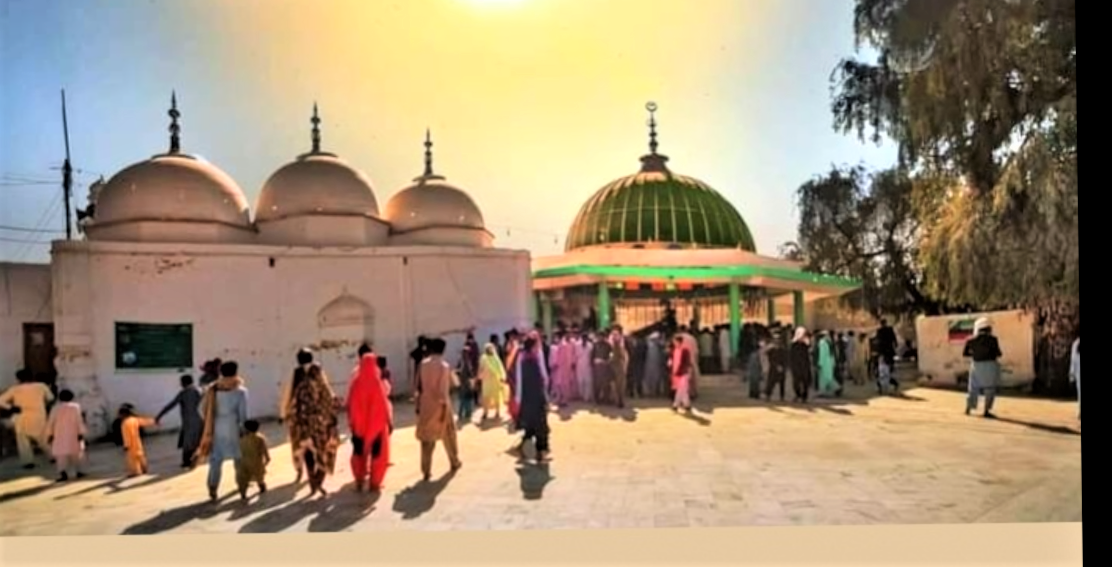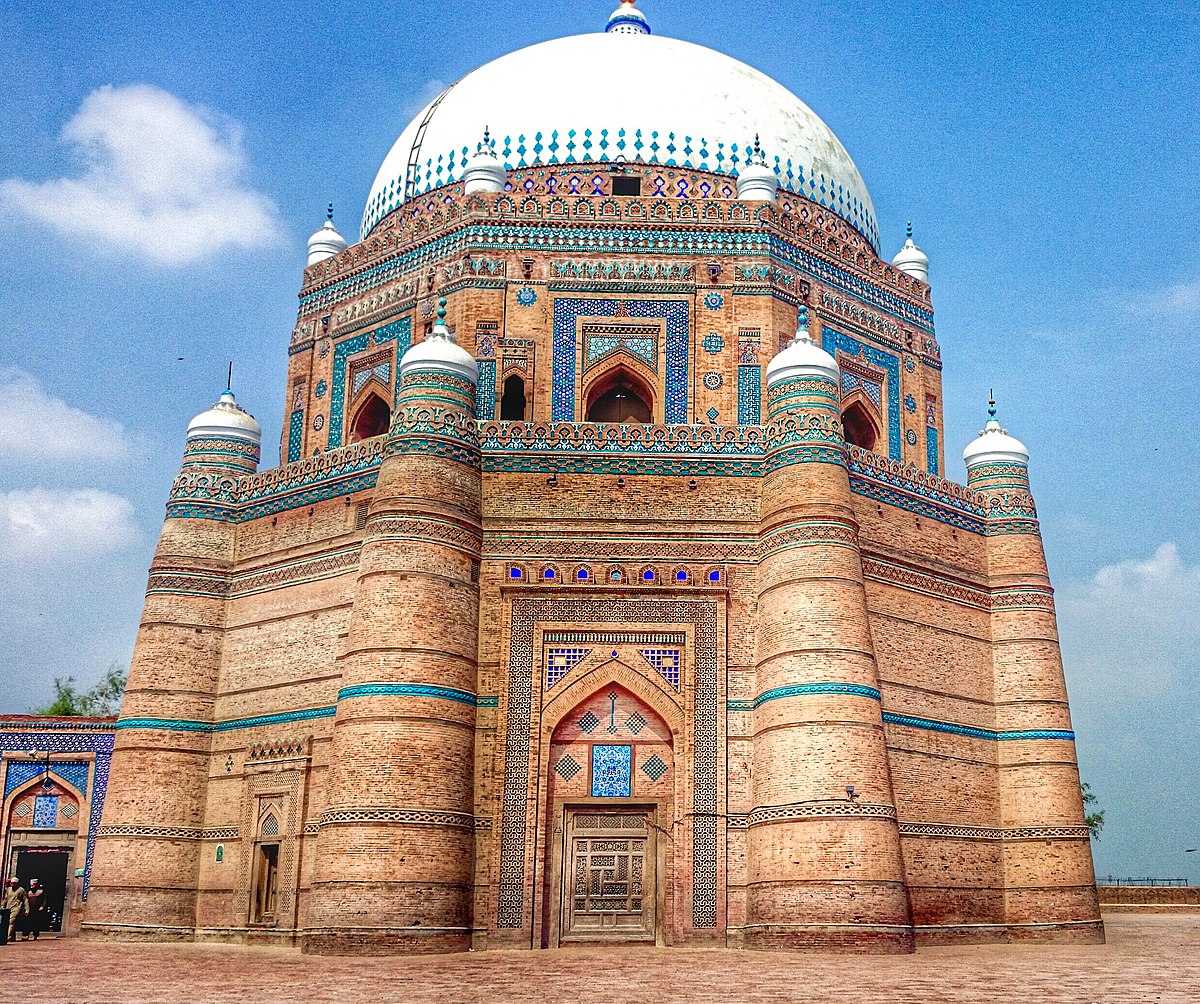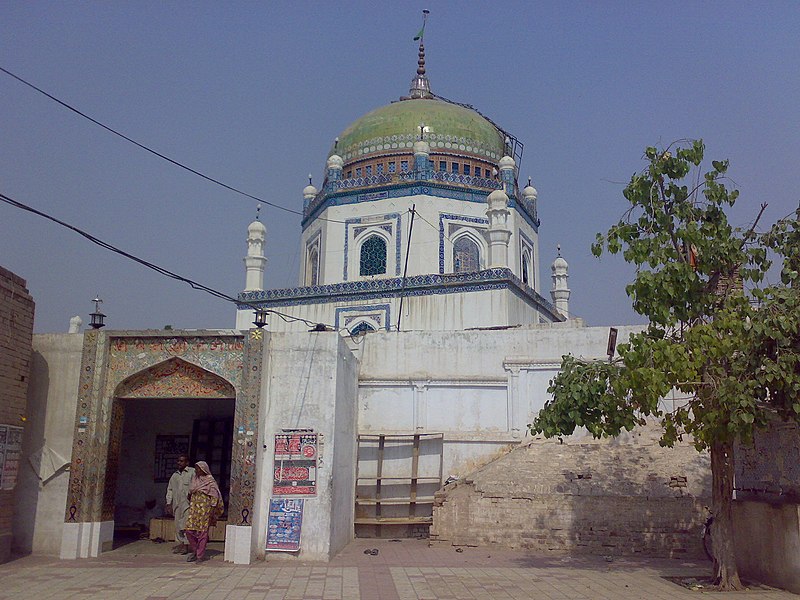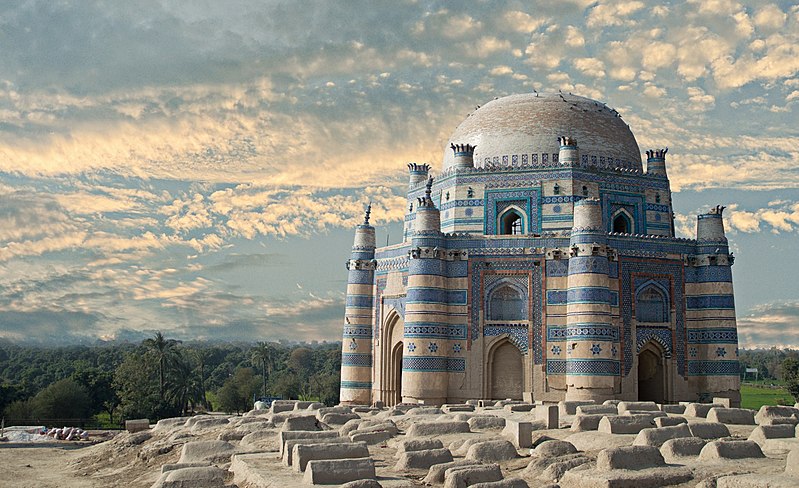- Phone : +92 62-925-5579
- Email : addl.dir.dost@iub.edu.pk
- Work Hours : Mon - Fri : 09:00 - 18:00
Tourism
Religious tours
Channan Pir
Channan Pir is a village in the Punjab province of Pakistan, it is named after a Sufi saint and contains his tomb. It is located between the Derawar and Din Gargh forts and lies a few kilometres from Yazman town, and in the start of the Cholistan desert. The village is linked to Jalaluddin Surkh-Posh Bukhari who was said to have come to the village while travelling en route to Jaisalmir during the 13th century.
It is a centre of the spiritual and cultural heritage of Yazman and Cholistan. Cultural activities are observed when the Urs (a religious fair) of Channan Pir is held. Urs is held on seven consecutive Thursdays starting in the month of March every year. The visitors throw tabbaruk (the sacred sweet) and the persons who pick and taste this tabarruk are supposed to be fortunate in achieving their worldly pursuits


Shah Rukn-e-Alam
The Tomb of Shah Rukn-e-Alam located in Multan, Pakistan, is the mausoleum of the Sufi saint Sheikh Rukn-ud-Din Abul Fateh. The shrine is considered to be the earliest example of Tughluq architecture, and is one of the most impressive shrines in the Indian subcontinent. The shrine attracts over 100,000 pilgrims to the annual urs festival that commemorates his death.
The tomb was built between 1320 and 1324 CE by Ghiyath al-Din Tughluq in the pre-Mughal architectural style. The tomb is considered the earliest example of Tughluq architecture, and pre-dates Tughluq monuments in Delhi. The tomb was built when Ghiyath al-Din served as governor of Dipalpur, and likely was intended to serve as a tomb for himself, before he became Emperor of the Delhi Sultanate. Rukn-e-Alam had initially been buried in the Shrine of Bahauddin Zakariya,
Data Darbar
Darbar Ali Hujwiri is located in the city of Lahore, Punjab, Pakistan is the largest Sufi shrine in South Asia.[1] It was built to house the remains of Ali Hujwiri, commonly known as Ganj Baksh, a Sufi saint from Ghazni in present-day Afghanistan, who is believed to have lived on the site in the 11th century CE.
The site is considered to be the most sacred place in Lahore,[2] and attracts up to one million visitors to its annual urs festival. The shrine was originally established as a simple grave next to the mosque which Hujwiri had built on the outskirts of Lahore in the 11th century.[1] By the 13th century, the belief that the spiritual powers of great Sufi saints were attached to their burial sites was widespread in the Muslim world,[3] and so a larger shrine was built to commemorate the burial site of Hujwiri during the Mughal period.[1] The shrine complex was expanded in the 19th century, and Hujwiri’s mosque rebuilt


Bibi Jawindi
The Tomb of Bibi Jawindi is one of the five monuments in Uch Sharif, Punjab, Pakistan, that are on the tentative list of the UNESCO World Heritage Sites. Dating back to the 15th century, the shrine was built in the spirit of the historical Sufi premier Bibi Jawindi of the Suhrawardiyyah order, a strictly hegemonistic Sunni school of theosophical thought which puts particular emphasis on the Shafi’i school of classical jurisprudence in the context of its interpretation of the Sharia. Jaw Indo was great-granddaughter to Jahaniyan Jahangasht, a famous Sufi saint in his own right.
Built of glazed bricks on an octagonal base with turrets on each of its eight corners, the tomb of Bibi Jawindi is considered one of the most ornate monuments in Uch.[4] The exterior of the building has three tiers with the top one supporting a dome, while the interior is circular due to thick angled walls rising up two stories.
Shamsuddin Sabzwari
Shamsuddin Sabzwari arrived in Multan in early 1200C.E. in modern Pakistan, established a dargah and preached Islam to the local population. Shamsuddin Sabzwari is considered to be a saint due to his poetry and the local traditions. Shamsuddin Sabzwari died in 1276 and his mausoleum is located in Multan. The Urs of Shamsuddin Sabzwari takes place June of each year. In South Asia, by the propagation of Islam commenced after the demise of Mohammad and Sindh was first to receive Islam. At about the same time, the followers and well wishers of Muhammad’s family had started preaching and conversion on behalf of Ali and his successive Imams. The sixth Imam, lsmail bin Imam Jafar-as-Sadiq, and the succeeding Ismaili Imams sent out Da’is (Missionaries) to the far corners of the then known world (Seerat-al-Mustaqim or Sat Panth in Indian language).

Subscribe & Follow us
Subscribe & Get More Information
Get IUB-DoST news and updates.
IUB-DoST is to integrate all aspects of tourism & hospitality development and management rather than being an add-on component.
- Phone : +92 62-925-5579
-
Address: Islamia University of Bahawalpur
Baghdad-ul-Jadeed Campus





 Users Today : 7
Users Today : 7